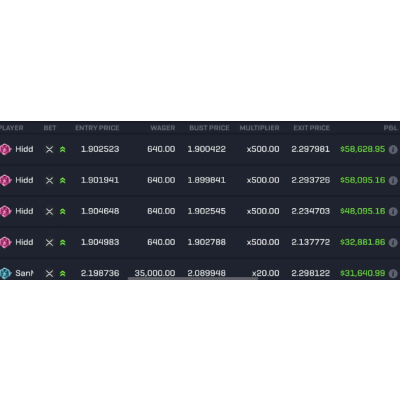

Crypto trading has evolved over the years, and with the rise of decentralized finance (DeFi), there are now more opportunities than ever before to make a profit. One popular strategy being employed by traders is the sandwich attack, which involves using a high-frequency bot to identify potential profits.
However, this method comes with its own set of challenges, including significant fees and the risk of attack. In recent days, an anonymous trader linked to a digital wallet labeled “jaredfromsubway.eth” has become the talk of the decentralized finance world after racking up both big fees and profits through this strategy.
In this article, we’ll take a closer look at what a sandwich attack is, how it works, and the potential risks and rewards of using this strategy.
A sandwich attack is a trading strategy that involves buying a cryptocurrency on one exchange, selling it on another exchange at a higher price, and then buying it back again on the original exchange at a lower price. This is all done in a matter of seconds, with the use of a high-frequency trading bot.
The basic idea behind a sandwich attack is to take advantage of the price difference between two exchanges. When a trader places an order for a token on a DeFi app, the bot can snap up that token on the exchange before the order is executed. This drives up the price of the token on that exchange.
Once the price has risen, the bot sells the token on another exchange for a profit. Then, the bot buys back the token on the original exchange at a lower price, effectively completing the sandwich. This process is repeated multiple times, with the aim of making a profit from each trade.
To understand how a sandwich attack works, it’s important to understand the mechanics of a decentralized exchange. Unlike a centralized exchange, a decentralized exchange (DEX) operates on a peer-to-peer network, meaning that there is no central authority controlling the trading process.
This means that anyone can create a new token and list it on a DEX, without having to go through a centralized authority. However, this also means that the trading volume on each DEX can vary widely, leading to significant price differences between different exchanges.
This is where the sandwich attack comes in. By using a high-frequency trading bot, a trader can quickly buy and sell a cryptocurrency on two different exchanges, taking advantage of the price difference between the two.
The bot will typically start by placing a buy order for a token on a DEX. Before the order is executed, the bot will buy the same token on another exchange where the price is lower. This drives up the price of the token on the DEX, allowing the bot to sell the token for a profit.
Once the token has been sold, the bot will then buy the token back on the original exchange at a lower price, completing the sandwich. The bot can then repeat this process multiple times, making a profit on each trade.
While sandwich attacks can be a profitable trading strategy, they also come with their own set of risks. One of the biggest risks is the cost of fees. Each trade on a DEX incurs a fee, which can quickly add up if the bot is making multiple trades per minute.
Another risk is the potential for attack. Since the bot is operating on a peer-to-peer network, there is always the risk that a malicious actor could attempt to manipulate the bot’s trades, potentially resulting in significant losses.
Despite these risks, many traders are still using sandwich attacks as a way to make a profit in the volatile world of DeFi trading. The use of high-frequency trading bots has become increasingly popular and as the
Recently, an anonymous trader linked to a digital wallet labeled “jaredfromsubway.eth” has gained attention for the success of their sandwich attack strategy. According to reports, the trader has made over $2.8 million in profit in just one month.
However, this success has also come with a significant cost. It is estimated that the trader has paid over $17 million in fees during this time, demonstrating the high cost of using a sandwich attack strategy.
Despite the significant fees, many traders are still intrigued by the potential profits of this strategy. It is worth noting, however, that the success of a sandwich attack strategy relies on several factors, including the volatility of the cryptocurrency market and the trading volume on each exchange.
As with any new technology or strategy, there are also regulatory concerns surrounding the use of sandwich attacks. While DeFi trading is largely unregulated, there are some concerns that this strategy could be used to manipulate the market or engage in illegal activities.
In addition, the use of high-frequency trading bots is also a controversial topic. Some argue that these bots give an unfair advantage to traders, as they can execute trades at a much faster rate than human traders.
As the world of DeFi continues to evolve, it is likely that regulators will begin to take a closer look at these trading strategies and their potential impact on the market.
Despite the risks and regulatory concerns surrounding sandwich attacks, it is likely that traders will continue to use this strategy in the future. The potential profits of this strategy, combined with the growing popularity of DeFi trading, make it an attractive option for many traders.
However, it is important for traders to carefully consider the risks and costs associated with this strategy before using it. It is also important to remember that success with a sandwich attack strategy relies on several factors, including market volatility and trading volume.
Ultimately, the use of sandwich attacks and other high-frequency trading strategies highlights the need for continued innovation and regulation in the world of DeFi trading. As the industry continues to grow and evolve, it is important for traders, regulators, and industry experts to work together to ensure the stability and fairness of the market.
In conclusion, sandwich attacks are a trading strategy that involves buying and selling cryptocurrencies on different exchanges in order to take advantage of price differences. While this strategy can be profitable, it also comes with significant risks and fees.
The success of sandwich attacks relies on several factors, including market volatility and trading volume. It is important for traders to carefully consider these factors before using this strategy, as well as the potential regulatory concerns surrounding high-frequency trading and DeFi trading in general.
As the world of DeFi trading continues to evolve, it is likely that we will see continued innovation in trading strategies, including the use of high-frequency trading bots. However, it is important for traders to approach these strategies with caution and to work together with regulators and industry experts to ensure the stability and fairness of the market.